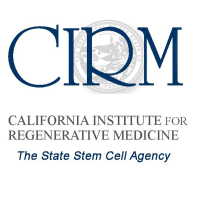Independent Report Sounds a Familiar Call for Change at Stem Cell Agency

An independent review of the state’s $3-billion, taxpayer-financed stem cell funding agency released last week raised conflict-of-interest questions, addressed issues of mismanagement and called for major restructuring.
The report, by the Institute of Medicine of the National Academies, echoed a critical 2009 review by the independent Little Hoover Commission, which was asked by agitated members of the state Legislature to “recommend ways to strengthen its governance structure, improve accountability and reduce conflict of interest” at the California Institute for Regenerative Medicine (CIRM).
Little Hoover warned that, “As CIRM matures, these issues take on greater consequence.”
The commission, like the institute, thought it problematic that most of the 29-member board of directors were representatives of the institutions they were directing lucrative grants to. Neither flat out called it illegal, but they both agreed it looked bad and raised questions about conflicts of interest.
Both reports noted the blurred authority between the board and management and other structural edifices originally crafted to address the unique scientific nature of the project and insulate the agency from political interference. Voters created CIRM by passing Proposition 71 in 2004 amid social and political turmoil over stem cells that paralyzed research at a national level. The agency developed structure and funding mechanisms emulated elsewhere, and was pronounced a success by the Institute of Medicine.
Both reports recommend reconfiguring the academia-dominated board by adding independent members with no ties to CIRM-funded entities. Little Hoover suggested lopping off 14 members. Both recommended separating management from the board, and the board from the money. They also recommended staggering the terms of board members and adding some people from the business community.
CIRM has awarded $1.3 billion to 59 academic and biotech institutions and approaches the halfway mark of its spending life with no established path for a next phase, if there is one. Stem cell research has become a growth industry since CIRM was created, in part, due to its leadership. There is a whole lot more potential for investment and development—and the jockeying for control is intensifying.
Private and public funding options in the near future will be influenced by the choices CIRM makes, or doesn’t make, now.
–Ken Broder
To Learn More:
Stem Cell Agency Is Urged to Restructure (by Erin Allday, San Francisco Chronicle)
Review of California's Stem Cell Agency Calls for Changes in Oversight and Governance (by Stephanie O’Neill, KPCC)
Report: CA Stem Cell Agency Needs a Restructuring (by Alicia Chang, Associated Press)
Will California Stem Cell Program Take New Criticisms to Heart? (by Michael Hiltzik, Los Angeles Times)
The California Institute for Regenerative Medicine: Science, Governance, and the Pursuit of Cures (The Institute of Medicine of the National Academies)
Stem Cell Research: Strengthening Governance to Further the Voters’ Mandate (Little Hoover Commission) (pdf)
- Top Stories
- Controversies
- Where is the Money Going?
- California and the Nation
- Appointments and Resignations
- Unusual News
- Latest News
- California Forbids U.S. Immigration Agents from Pretending to be Police
- California Lawmakers Urged to Strip “Self-Dealing” Tax Board of Its Duties
- Big Oil’s Grip on California
- Santa Cruz Police See Homeland Security Betrayal in Use of Gang Roundup as Cover for Immigration Raid
- Oil Companies Face Deadline to Stop Polluting California Groundwater





